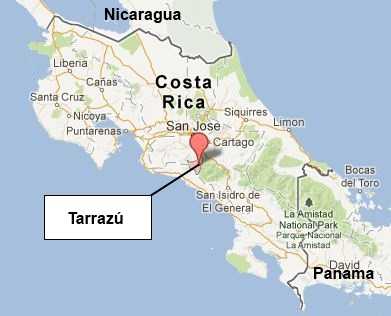ZONA DE LOS SANTOS, Costa Rica — High in the mountains of south central Costa Rica is the Zona de los Santos, an agricultural area with unique qualities and whose inhabitants have perfected the art of growing and processing one of the best coffees in the world.
A series of natural factors have enriched the region’s mountainous land, and those who live here have discovered how to make the most of it, especially with coffee, a product that accounts for 90 percent of the local economy.
“We’re privileged by the altitude, the soil, the temperature and the climate,” said William Rojas, representative of the coffee cooperative CoopeDota, one of the largest in the area.
The main communities of this area are the districts of Tarrazú, Dota and Leon Cortés in the southern part of San José province, where some 7,000 coffee-producing families on 13,000 hectares (32,100 acres) of land produce half a million sacks of coffee beans each year.
The coffee is sought after in markets in the United States, Canada, Spain, Germany, The Netherlands, the UK, Japan, South Korea, China, Taiwan, Australia and New Zealand.
The coffee beans are collected by hand during a harvest that lasts from October to March, and in which thousands of immigrants from Panama’s northern indigenous region, Nicaraguans and local residents take part.
A large portion of the coffee beans are sun-dried after being processed in water.
The Zona de Los Santos has been satisfying the world’s most demanding palates for years with fine coffees produced in small batches to achieve the highest possible quality – and consequently fetch the highest prices on the market.
Rojas said that CoopeDota has also certified the first carbon-neutral coffee in the world, which is achieved by changing production processes to save water, re-use waste and reduce pollution.
Wood-burning stoves have been replaced with ones that burn formerly disregarded coffee bean the hulls; while waste water and other by-products from the coffee harvest and processing are recycled to make fertilizer.
Coffee is one of Costa Rica’s leading exports. At present it is the third biggest export worth $306.5 million in 2016, after pineapples with $881 million, and the number one crop, bananas, with $987.5 million.










